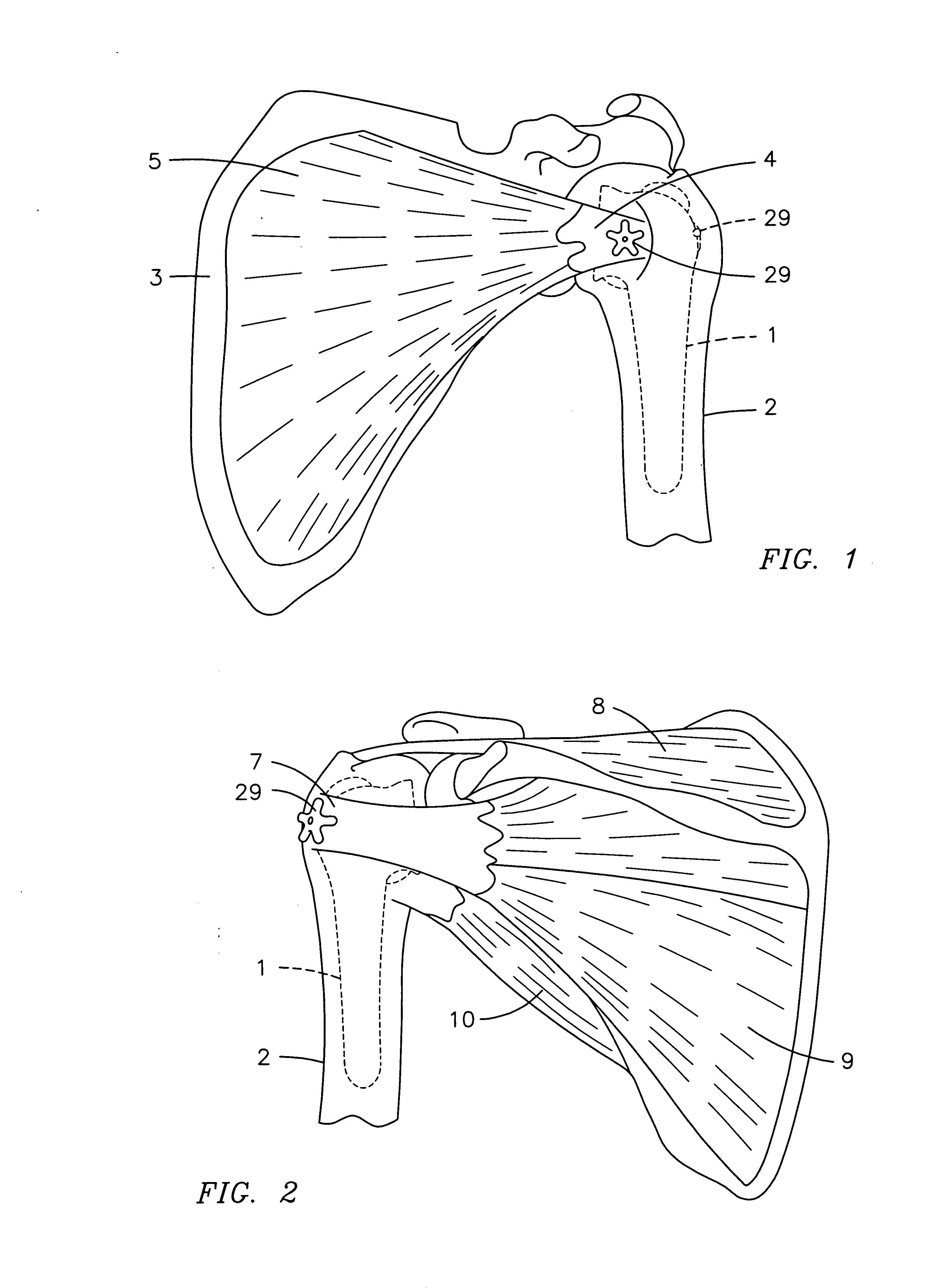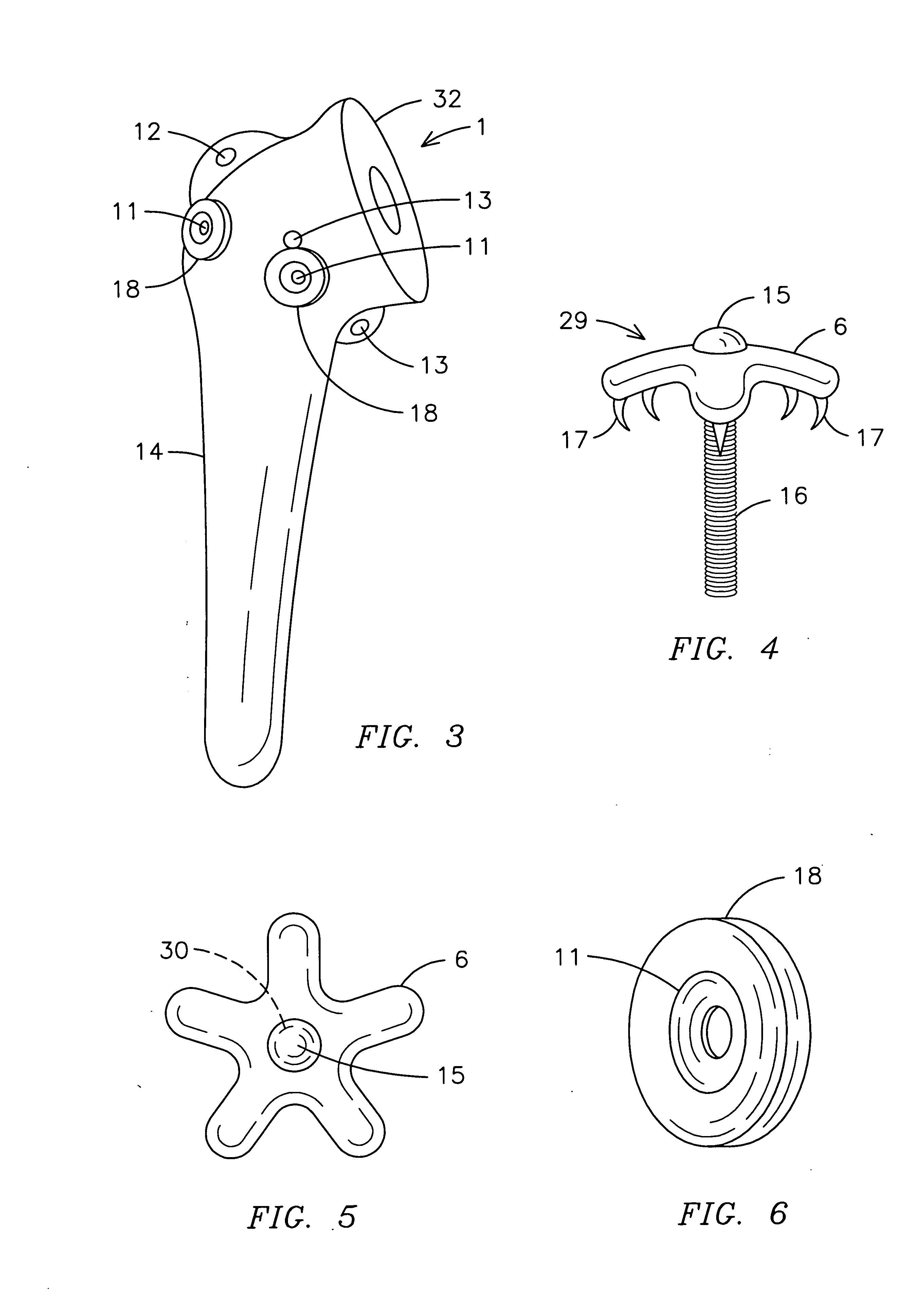Prosthetic humeral device and method
a humeral device and humeral tube technology, applied in the field of prosthetic humeral devices, can solve the problems of difficult to control the height of the greater tuberosity, and the contaminated wound with air born matter, so as to reduce the amount of time to perform and reduce the amount of tuberosity fragments. the effect of accurate reduction and secure reduction
- Summary
- Abstract
- Description
- Claims
- Application Information
AI Technical Summary
Benefits of technology
Problems solved by technology
Method used
Image
Examples
first embodiment
[0036] With reference to FIG. 4, a perspective view of a fastening means of the present invention is shown. The fastening means 29 includes a screw 16 having a screw head 15 that is inserted through a washer 6. Located on an underside of the washer 33 is at least one projection 17 that secures the washer 6 to the humerus 2 and tendons. The washer 6 is preferably convex so as to provide a more conforming securement of the tuberosities to the humerus 2 and prosthetic humeral device 1.
[0037] In FIG. 5, a top view of a first embodiment of a fastening means of the present invention is shown. The washer 6 is preferably star-shaped and has a centrally located hole 30 for the insertion of a screw 16.
[0038]FIG. 6 shows a perspective view of a guiding hole area of the present invention. The guiding hole area 18 includes a guide hole 11 for the insertion of a screw 16. The guide hole 11 narrows so as the diameter of the guide hole 11 becomes smaller to assist in the guidance of the screw 16. ...
second embodiment
[0041] Finally, FIG. 10 shows a perspective view of a fastening means of the present invention. The fastening means 29 may include a star-shaped washer 6 as shown in FIGS. 1, 2, 4 and 5. In the alternative, the washer 6 may be in various other shapes, including having at least two prongs 28. Using the dual-pronged washer 6, a surgeon is able to aim where the fixation point is gained. Similar to the star-shaped washer 6, the dual-pronged washer 6 is convex and includes projections 17 located on the underside of the washer 6.
[0042] To use the present invention, a surgeon performs substantially the same steps traditionally used in current hemi-shoulder replacements. That is, a surgeon first makes an incision into the shoulder and mobilize the chunks of bone that have become broken. Then, the surgeon removes the head, greater and lesser tuberosities from the humerus bone. He or she then drills down into the canal of the humerus to create an area for the insertion of a prosthetic humeral...
PUM
 Login to View More
Login to View More Abstract
Description
Claims
Application Information
 Login to View More
Login to View More - R&D
- Intellectual Property
- Life Sciences
- Materials
- Tech Scout
- Unparalleled Data Quality
- Higher Quality Content
- 60% Fewer Hallucinations
Browse by: Latest US Patents, China's latest patents, Technical Efficacy Thesaurus, Application Domain, Technology Topic, Popular Technical Reports.
© 2025 PatSnap. All rights reserved.Legal|Privacy policy|Modern Slavery Act Transparency Statement|Sitemap|About US| Contact US: help@patsnap.com



